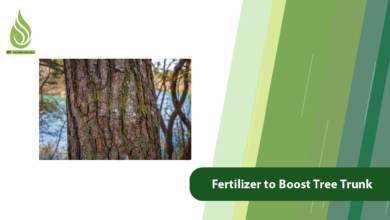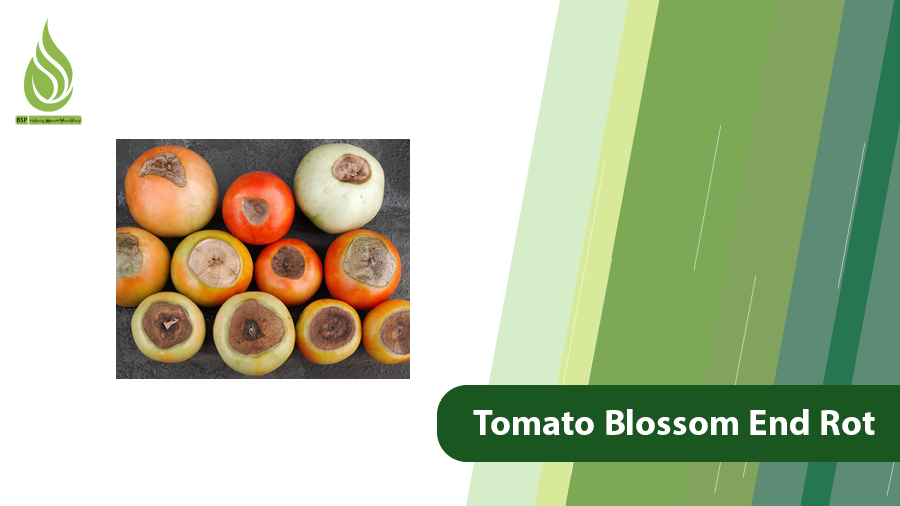
Tomato Blossom End Rot: Causes, Symptoms, & Prevention
Tomato blossom end rot (BER) is one of the most common and frustrating issues faced by tomato growers, leading to reduced crop quality and significant yield losses. This condition manifests as dark, sunken spots at the blossom end (opposite the stem) of the fruit. Unlike many plant ailments, blossom end rot is not caused by fungi or bacteria but is a physiological disorder linked to environmental and nutritional imbalances. In this comprehensive guide, we’ll explore the causes of blossom end rot, its symptoms, and practical, research-backed strategies to prevent it, ensuring a healthy and bountiful tomato harvest.
What is Tomato Blossom End Rot?
Blossom end rot is a disorder that affects the fruit of tomato plants, characterized by soft, discolored areas at the blossom end. These areas start as small, water-soaked spots and progress to brown or black, sunken lesions. While the initial damage is not caused by pathogens, affected areas can become entry points for secondary fungal or bacterial infections, leading to further fruit decay. This issue typically appears during the early stages of fruit development, significantly reducing the fruit’s marketability and appeal.
Although most associated with tomatoes, blossom end rot can also affect related crops like peppers, eggplants, and squash. The good news is that since it’s not a contagious disease, it can be managed effectively with proper care and preventive measures. Understanding the underlying causes is key to keeping this disorder at bay.
Symptoms of Blossom End Rot
The first signs of blossom end rot are subtle but distinct. A small, water-soaked spot appears at the blossom end of the developing tomato fruit. Over time, this spot enlarges, darkens to a brown or black hue, and becomes sunken and leathery. The affected fruit often becomes unsightly and unmarketable, leading to significant losses for growers. Unlike diseases that impact roots, stems, or leaves, blossom end rot targets the fruit directly, leaving the rest of the plant unaffected.
Early detection is critical. Regularly inspecting young fruit for these characteristic spots allows growers to take swift action to mitigate further damage. While the affected fruit is typically discarded, addressing the root causes can prevent the issue from spreading to other fruits on the plant.
Primary Cause: Calcium Deficiency
The primary driver of blossom end rot is a deficiency of calcium in the developing fruit. Calcium is essential for building strong cell walls, particularly during rapid cell division in young tomatoes. When calcium levels are insufficient, the cell walls at the blossom end weaken and collapse, resulting in the characteristic dark, decayed spots.
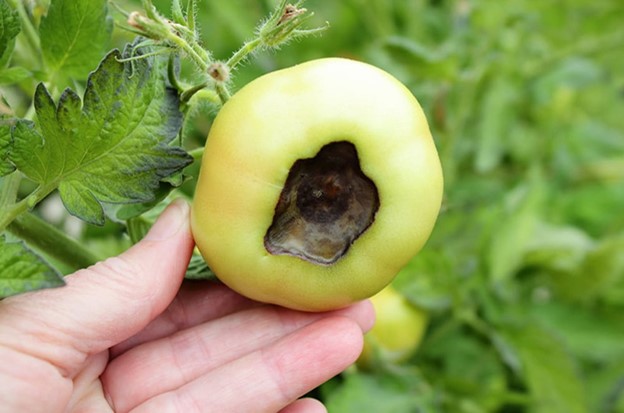
Calcium is an immobile nutrient within the plant, meaning it doesn’t easily move from one part of the plant to another. Its transport relies heavily on the plant’s water uptake through the roots. If soil moisture is inconsistent or calcium levels in the soil are low, the fruit may not receive adequate calcium, even if the plant appears healthy. According to research from the University of California Agriculture and Natural Resources, maintaining optimal soil calcium levels and consistent watering are critical for preventing blossom end rot.
Factors Contributing to Calcium Deficiency
- Low Soil Calcium Levels: Soils naturally low in calcium, common in sandy or acidic soils, can lead to deficiencies. Testing soil before planting is essential to identify and address nutrient imbalances.
- Inconsistent Watering: Fluctuations in soil moisture, such as periods of drought followed by heavy watering, disrupt calcium uptake. This is because calcium moves to the plant via the transpiration stream, which is driven by consistent water availability.
- High Soil Salinity: Salty soils, often found in arid regions or areas with poor drainage, hinder the plant’s ability to absorb water and nutrients, including calcium.
- Acidic or Alkaline Soils: A soil pH below 6.0 (too acidic) or above 7.5 (too alkaline) reduces calcium availability. The ideal pH range for tomatoes is 6.0–6.8, where nutrients are most accessible. We suggest you take a look at our guide to the most used fertilizers.
- Root Damage: Physical damage to roots from cultivation, pests, or diseases like root rot can impair calcium absorption.
- Varietal Susceptibility: Some tomato varieties, particularly large-fruited or elongated types like Roma, are more prone to blossom end rot due to their higher calcium demands.
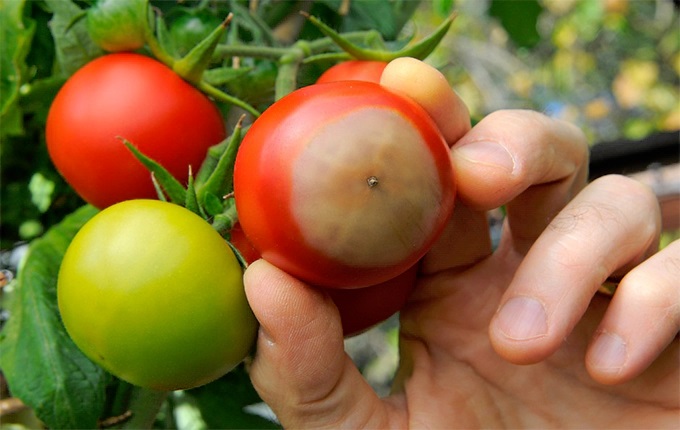
The Role of Nitrogen in Calcium Uptake
While nitrogen is a vital nutrient for plant growth, promoting lush foliage and vigorous development, excessive nitrogen can exacerbate blossom end rot. High nitrogen levels, especially from fertilizers like urea, can disrupt calcium uptake in several ways:
- Competition for Absorption: Excessive nitrogen in the soil increases the plant’s preference for nitrogen uptake over calcium, leading to a relative deficiency in the fruit.
- Vegetative Overgrowth: High nitrogen encourages rapid leaf and stem growth, diverting calcium to these parts of the plant. Since calcium is immobile, it doesn’t readily redistribute to the fruit, which has lower transpiration rates compared to leaves.
- Increased Transpiration: Large, leafy plants transpire more, pulling calcium toward the leaves and away from the fruit.
To avoid this, growers should balance nitrogen applications and avoid over-fertilization. Soil tests can guide precise nutrient management, ensuring nitrogen supports growth without compromising calcium availability. We also suggest you be careful about fertilizer compatibility.
Other Contributing Factors
Beyond calcium deficiency, several environmental and cultural factors can trigger or worsen blossom end rot:
- Moisture Fluctuations: Erratic watering disrupts calcium transport. For example, a dry spell followed by heavy irrigation can cause rapid fruit expansion, outpacing calcium delivery to the fruit’s cells.
- Temperature Extremes: High temperatures, especially when paired with low humidity, increase transpiration in leaves, diverting calcium away from fruit. Similarly, planting too early in cool conditions can slow root activity and calcium uptake.
- Soil pH Imbalances: As mentioned, soils that are too acidic or alkaline limit calcium availability. Regular soil testing and amendments like lime (to raise pH) or sulfur (to lower pH) can correct these issues.
- Secondary Pathogens: While not the cause, fungi like Fusarium or bacteria like Ralstonia solanacearum can exploit weakened tissue, worsening damage. Controlling these pathogens through crop rotation and resistant varieties is essential.
- Nutrient Competition: High levels of other nutrients, such as potassium, magnesium, or phosphorus, can interfere with calcium uptake. For example, excessive potassium can compete with calcium at the root level, reducing its absorption.
- Root Health: Any factor that compromises root health, such as nematodes, compacted soil, or overwatering, reduces the plant’s ability to absorb calcium.
Prevention Strategies for Blossom End Rot
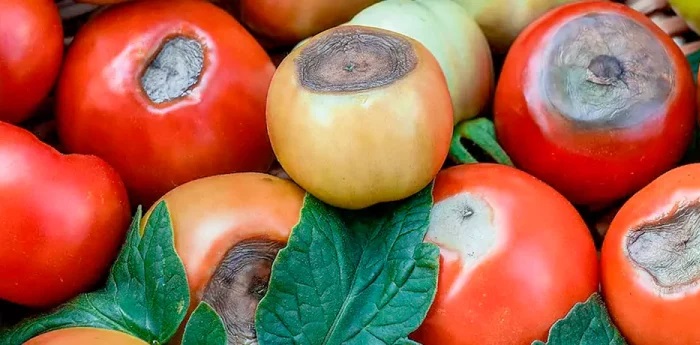
Preventing blossom end rot requires a holistic approach that addresses soil health, watering practices, and nutrient management. Here are practical, evidence-based strategies to keep your tomatoes healthy:
1. Consistent and Proper Watering
Maintaining even soil moisture is critical for calcium uptake. Irregular watering stresses the plant and disrupts nutrient transport. Drip irrigation is highly effective, delivering water directly to the root zone and minimizing fluctuations. Aim to keep the soil consistently moist but not waterlogged. Mulching with organic materials like straw or wood chips can help retain moisture and regulate soil temperature.
2. Optimize Soil Calcium Levels
Conduct a soil test before planting to assess calcium levels and pH. If calcium is deficient, incorporate amendments like gypsum (calcium sulfate) or agricultural lime (calcium carbonate) into the soil. Foliar sprays containing calcium, such as calcium nitrate, can provide a quick fix during the growing season but are less effective than soil amendments for long-term prevention.
3. Balance Nutrient Applications
Avoid over-fertilizing with nitrogen-heavy fertilizers, which can exacerbate calcium deficiencies. Use a balanced fertilizer formulated for tomatoes, such as a 10-10-10 or 5-10-10 blend, and follow soil test recommendations. Apply calcium-based fertilizers separately from those containing competing nutrients like potassium or magnesium to avoid absorption issues.
4. Maintain Optimal Soil pH
Test soil pH and aim for a range of 6.0–6.8. If the soil is too acidic, apply lime to raise the pH; if too alkaline, use elemental sulfur to lower it. Regular testing ensures long-term soil health and nutrient availability.
5. Choose Resistant Varieties
Some tomato varieties are less susceptible to blossom end rot. For example, hybrid varieties like ‘Celebrity’ or ‘Mountain Pride’ are known for their resistance. Consult with local extension services or seed catalogs to select varieties suited to your region and growing conditions.
6. Improve Soil Structure and Reduce Salinity
Incorporate organic matter, such as compost or well-rotted manure, to improve soil structure, enhance water retention, and reduce salinity. This promotes healthy root development and improves nutrient uptake. In high-salinity areas, leaching the soil with clean water can help flush out excess salts.
7. Manage Temperature Stress
Protect plants from extreme heat by providing shade during the hottest parts of the day, especially in regions with intense summers. Conversely, avoid planting too early in the season when soil temperatures are still cool, as this can hinder root activity and calcium uptake.
8. Control Secondary Pathogens
Implement crop rotation and use disease-resistant varieties to minimize the impact of fungal and bacterial pathogens. Regular scouting for pests and diseases ensures early intervention, preventing root damage that could exacerbate blossom end rot.
9. Monitor and Protect Root Health
Avoid mechanical damage to roots during cultivation, and ensure proper drainage to prevent waterlogging. Healthy roots are essential for efficient water and nutrient uptake, including calcium.
Additional Tips from Agricultural Research
Research from sources like the Cornell University Cooperative Extension emphasizes the importance of integrated management for blossom end rot. For example, maintaining a consistent watering schedule during fruit set and early development is critical, as this is when tomatoes are most vulnerable. Additionally, studies suggest that mulching not only conserves moisture but also moderates soil temperature, reducing stress on the plant.
For commercial growers, precision agriculture techniques, such as soil moisture sensors and automated irrigation systems, can optimize water and nutrient delivery, further reducing the risk of blossom end rot. Home gardeners can achieve similar results with diligent monitoring and manual adjustments.
Conclusion
Blossom end rot is a manageable challenge for tomato growers, provided they address its root causes: calcium deficiency, inconsistent watering, and environmental stressors. By implementing proper soil management, balanced fertilization, and consistent irrigation practices, growers can significantly reduce the incidence of this disorder. Selecting resistant varieties and monitoring soil health further enhance the chances of producing high-quality, marketable tomatoes. With these strategies, you can enjoy a healthy, flavorful, and abundant tomato harvest, free from the frustration of blossom end rot.
